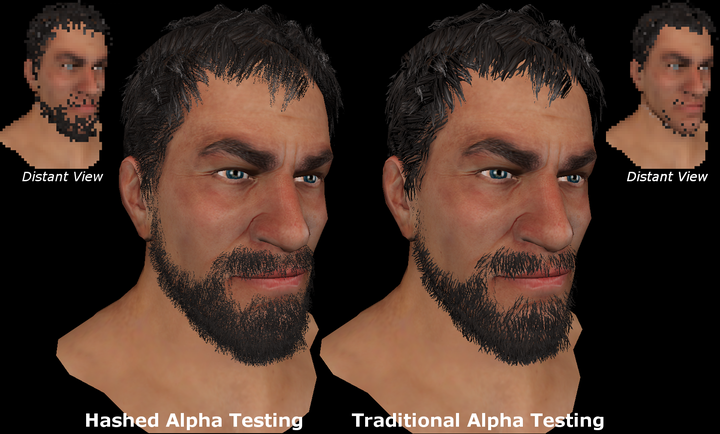
Abstract
Renderers apply alpha testing to mask out complex silhouettes using alpha textures on simple proxy geometry. While widely used, alpha testing has a long-standing problem that is underreported in the literature, but observable in commercial games: geometry can entirely disappear as alpha mapped polygons recede with distance. As foveated rendering for virtual reality spreads, this problem worsens as peripheral minification and prefilitering also causes this problem for nearby objects.
We introduce two algorithms, stochastic alpha testing and hashed alpha testing, that avoid this issue but add some noise. Instead of using a fixed alpha threshold, stochastic alpha testing discards fragments with alpha below a randomly chosen threshold in (0…1]. Hashed alpha testing uses a hash function to choose the threshold procedurally per-pixel, producing stable noise that reduces temporal flicker.
With a good hash function and inputs, hashed alpha testing maintains distant geometry without introducing more temporal flicker than traditional alpha testing. We describe how hashed and stochastic alpha testing apply to alpha-to-coverage and screen-door transparency, and how they simplify stochastic transparency.